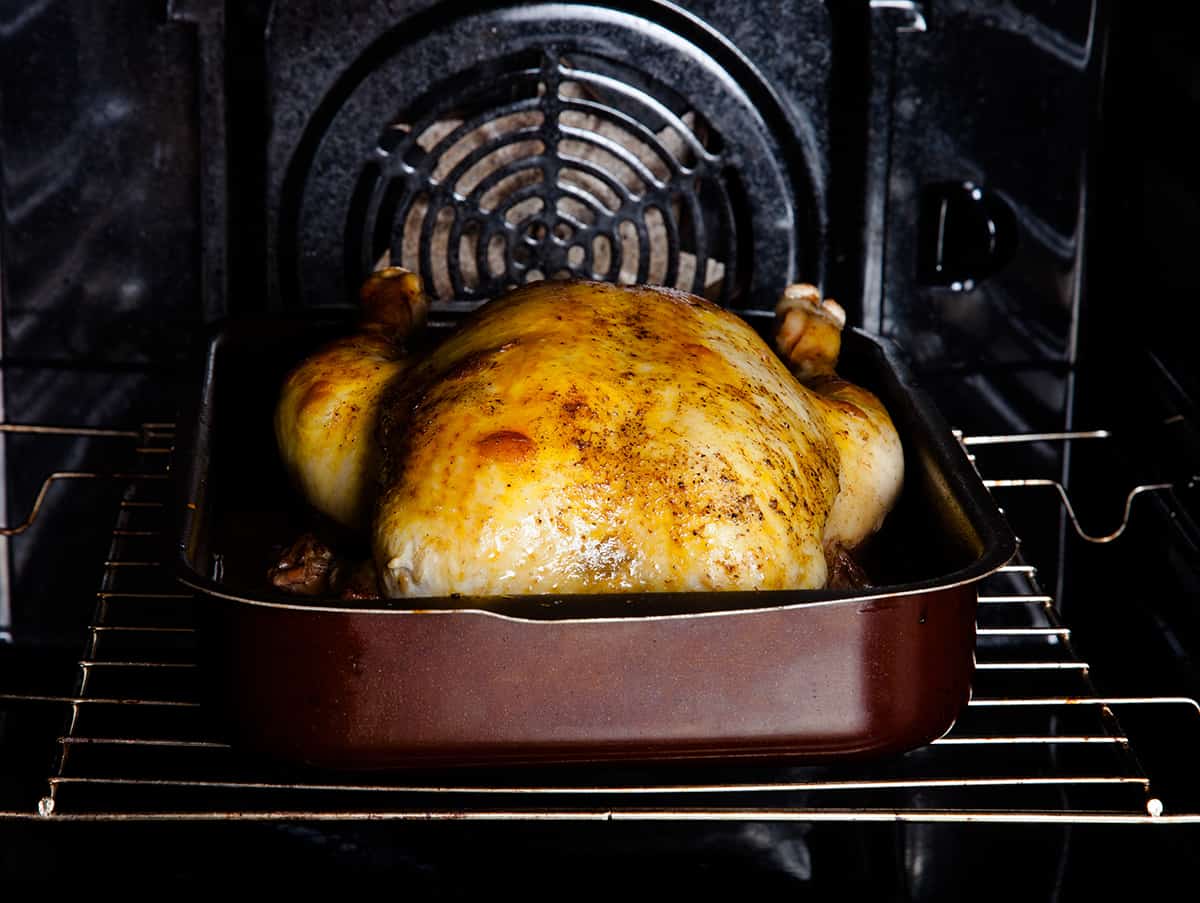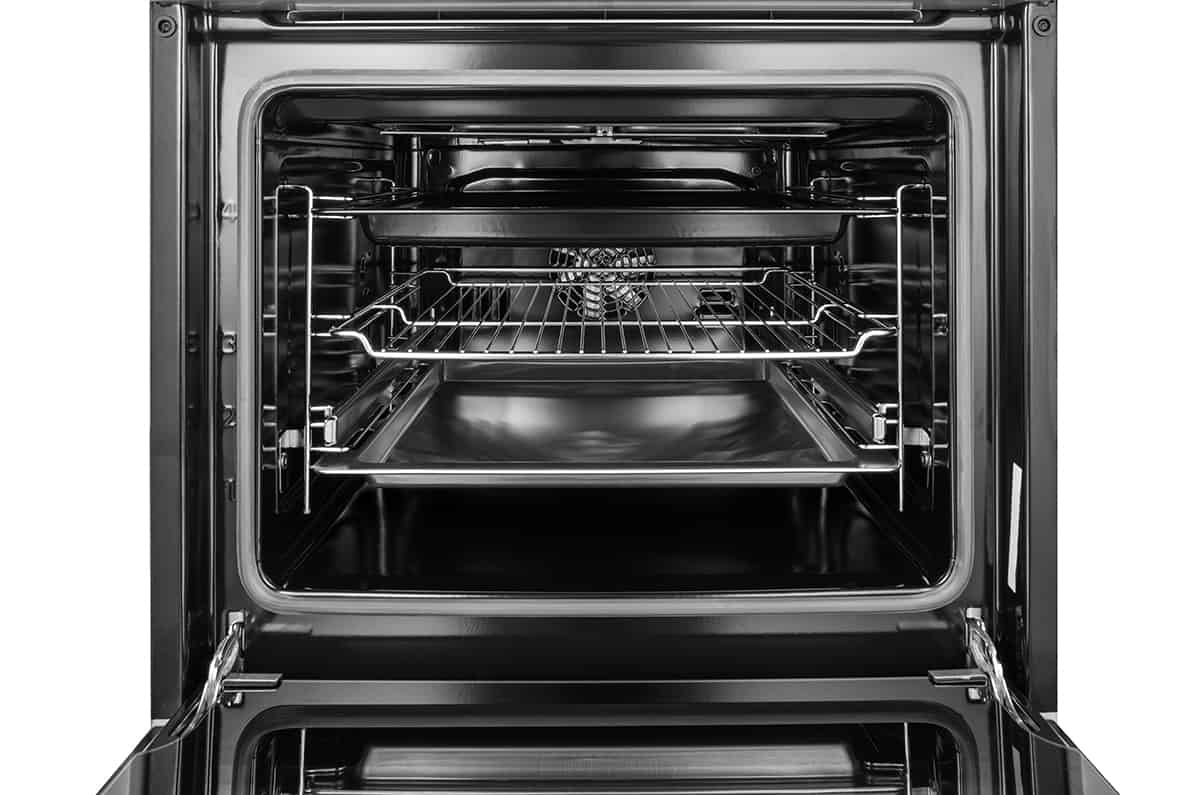You’ve probably heard of convection ovens before. They’re pretty commonplace in home kitchens, even though conventional ovens are the much more widely used type of oven. What you didn’t know is that convection ovens come in a wide range of sizes.
Convection ovens range in size from 15 to 19-inch portable countertop ovens to large 30 × 36-inch freestanding models. Most convection ovens have a standard depth of 16 inches.
In this guide, I’ll explain the differences between convection ovens and conventional ovens and the types of convection ovens, and their sizes. I’ll also cover a few tips for buying a convection oven.
What Is a Convection Oven?
For most people, an oven is an oven. While it’s true that an oven is used for baking, it’s not true that all ovens are the same.
The only real difference between convection ovens and conventional ovens is that convection ovens come with a fan and exhaust system. This system takes heated air from inside the oven and distributes it evenly. In every other sense, the two are practically identical.
Convection Ovens vs. Conventional Ovens

But what sort of benefits does a fan and exhaust system offer? I’ll explain below.
Even cooking
Because heat is distributed evenly across the interior of an oven, it has a better chance at baking breads and cakes more evenly. Conventional ovens simply introduce heat into an enclosed space. It’s simply a matter of “luck” that your goods come out baked rather than just heated up.
Better browning
When heated air is blown throughout the inside of a convection oven, it promotes better browning and crispiness. This is only possible by removing cold spots in the oven—something conventional ovens suffer from. Best of all, you don’t have to crank the temperature of a convection oven to achieve optimal browning! In fact, due to even heat distribution, it’s advised that you lower the baking temperature by 25°F!
Faster baking
Despite lower baking temperatures, convection ovens cook food 25% quicker than conventional ovens. This is a tremendous benefit since the less time your baked meats spend in the oven, the less they will dry out. However, you should still keep a close eye on your baked goods since, just like conventional ovens, it can be easy to mistime the baking process.
Energy Saver
A convection oven bakes food more quickly at a lower temperature. This translates into lower energy costs. Some have even claimed that they are 20% more efficient than conventional ovens. If you’re going to spend hours and hours in the kitchen baking food, this can mean huge savings on your energy bill. However, on average, they are a bit costlier than conventional ovens, but they will eventually pay for themselves.
Convection Oven Size
Now, you’re probably wondering what size convection ovens come in. There is no single answer since manufacturers make convection ovens in various styles—portable countertop, wall, and standalone convection ovens. However, I’ve found the average size range of each convection oven type.
Portable convection ovens usually measure between 15 and 19 inches wide. They are about 16 inches deep and stand roughly 18 inches tall.
Wall convection ovens measure between 24 and 30 inches wide, 16 inches deep, and 24 inches tall.
Standalone convection ovens measure between 30 and 36 inches wide, 16 inches deep, and between 24 and 30 inches tall. With its leg supports, it can stand roughly 4 feet above your kitchen floor.
Does Convection Oven Size Matter?

Yes, it does, especially if you’re a hardcore baker.
The larger the oven, convection or otherwise, the more it can bake in a single cycle. Also, a larger oven will accommodate larger food items, including turkeys and pizzas.
If you want a convection of for bread-baking purposes, you can get by with a portable countertop model, which is the least costly option but doesn’t miss out on anything in terms of baking evenness and cooking times.
Wall and freestanding convection ovens are also known as full-size models, which can bake larger or higher amounts of food at once. The main advantage wall convection ovens have over their freestanding counterparts is that they don’t take any floor space. They are built into your kitchen walls, so you can install them as high or as low as you want.
Can I Turn Off Convection Cooking in a Convection Oven?
Yes, you can. Now, you’re probably wondering why you would even want to deactivate convection mode since it’s much better at baking bread and meats. The answer is simple: there are some food items that don’t need to be baked very quickly. Examples of this include souffles, flans, moist cakes, and quick-bake bread.
For everything else, from roasts to cookies to sourdough loaves, you should activate convection mode.
Convection Oven Buying Tips
Gas or electric?
Although gas is generally cheaper than electricity, you should choose a convection oven based on the availability of different fuel sources. There are also gas-electric convection ovens that allow you to switch between fuel sources at will. They are a bit more expensive than single-fuel convection ovens, but if your kitchen has access to both gas and electricity, the added cost might be worth the investment.
Portable vs. Full-Size
This relates to the size of the convection oven. You should measure how much free space you can dedicate in your kitchen before deciding whether to go for a freestanding model. Wall convection ovens don’t take any countertop or floor space at all, but installation can be expensive.
Solid vs. Glass Doors
If you want to see your creation rising in the oven, you should get a glass-door convection oven. If you want to live on the edge and guess when your food is done cooking in the oven, a less expensive solid-door convection oven might be for you.
Oven Depth
Although 16 inches is the standard depth for convection ovens, there are some models that are 20 inches and deeper. The deeper the oven, the more you can bake at once, and the less time your guests will spend waiting for dinner and dessert to be served.






